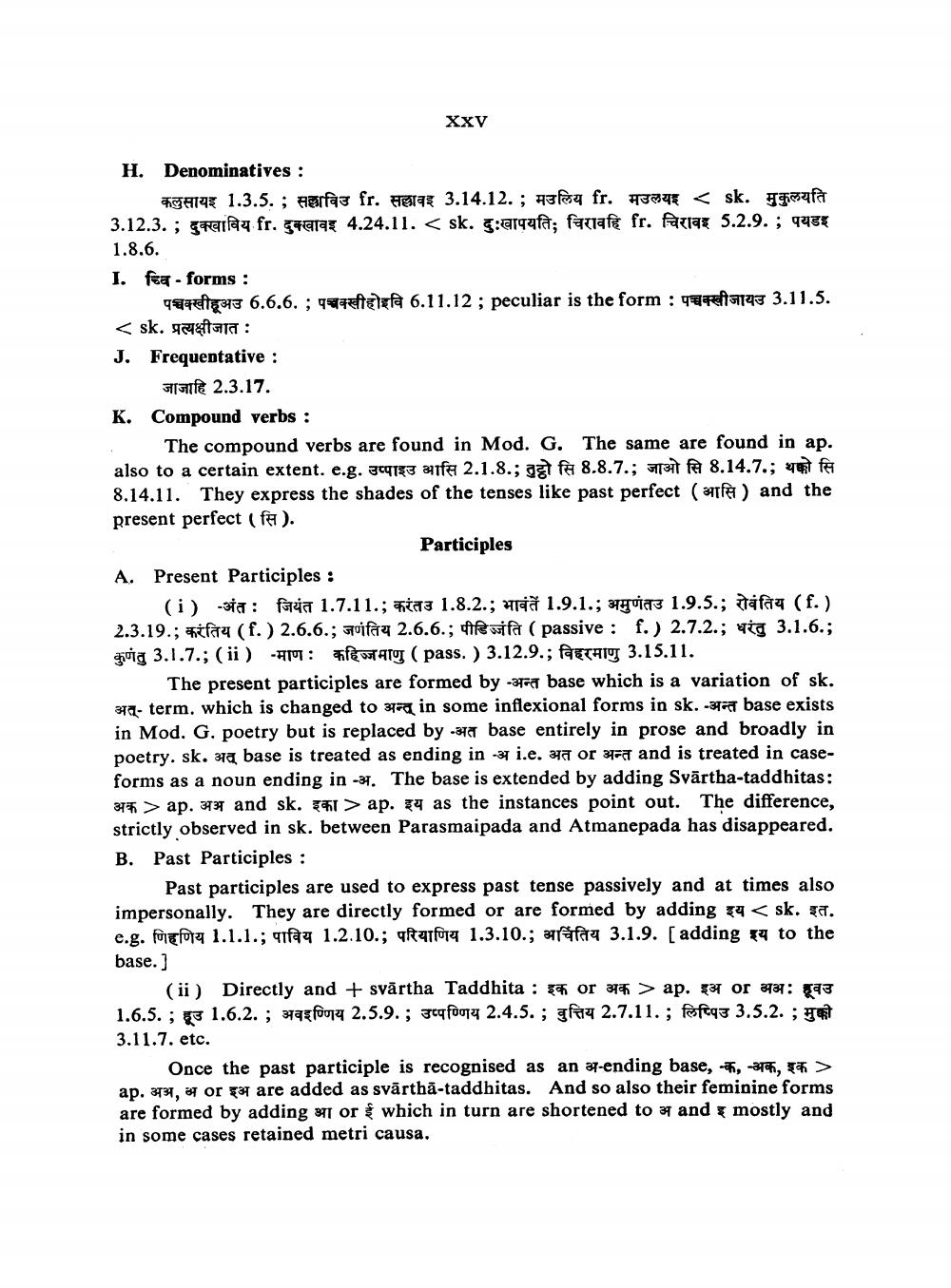________________
Xxy
H. Denominatives :
P9A145 1.3.5.; falfas fr. Helas 3.14.12.; Afra fr. 534 < sk. safa 3.12.3. ; greif fr. gelas 4.24.11. < sk. J:argafa; faziafe fr. Pazia 5.2.9. ; 9955 1.8.6. 1. fa-forms :
qarelas 6.6.6. ; qaretxa 6.11.12 ; peculiar is the form : 9x17143 3.11.5. < sk. galata: J. Frequentative :
The 2.3.17. K. Compound verbs : . The compound verbs are found in Mod. G. The same are found in ap. also to a certain extent. e.g. 369133 af 2.1.8.; gg fa 8.8.7.; FT RA 8.14.7.; of 8.14.11. They express the shades of the tenses like past perfect ( 341 ) and the present perfect (fe).
Participles A. Present Participles :
(i) : farcia 1.7.11.; Hias 1.8.2.; Hreð 1.9.1.; quas 1.9.5.; fafaa (f.) 2.3.19.; #faa (f.) 2.6.6.; Fuifaa 2.6.6.; HR wila (passive : f.) 2.7.2.; nid 3.1.6.; guig 3.1.7.; (ii) -#1: STATU (pass.) 3.12.9.; factat 3.15.11.
The present participles are formed by -3 base which is a variation of sk. 379-term, which is changed to 3779 in some inflexional forms in sk. -347a base exists in Mod. G. poetry but is replaced by -base entirely in prose and broadly in poetry. sk. a base is treated as ending in -3 i.e. 2 or 3ra and is treated in caseforms as a noun ending in -34. The base is extended by adding Svārtha-taddhitas: 377 >ap. 3734 and sk. 1 > ap. 4 as the instances point out. The difference, strictly observed in sk. between Parasmaipada and Atmanepada has disappeared. B. Past Participles :
Past participles are used to express past tense passively and at times also impersonally. They are directly formed or are formed by adding #4 < sk. a. e.g. fogfore 1.1.1.; qay 1.2.10.; fatfore 1.3.10.; fata 3.1.9. [adding 4 to the base.)
(ii) Directly and + svärtha Taddhita : 2 or 3h > ap. 134 or 234: 493 1.6.5. ; 3 1.6.2. ; 3afony .5.9. ; gcofoo74 2.4.5. ; ghy 2.7.11.; poftqz 3.5.2.; 3.11.7. etc.
Once the past participle is recognised as an 37-ending base, -, -37, > ap. 371, 3 or 37 are added as svārthā-taddhitas. And so also their feminine forms are formed by adding 97 or which in turn are shortened to 37 and mostly and in some cases retained metri causa.




